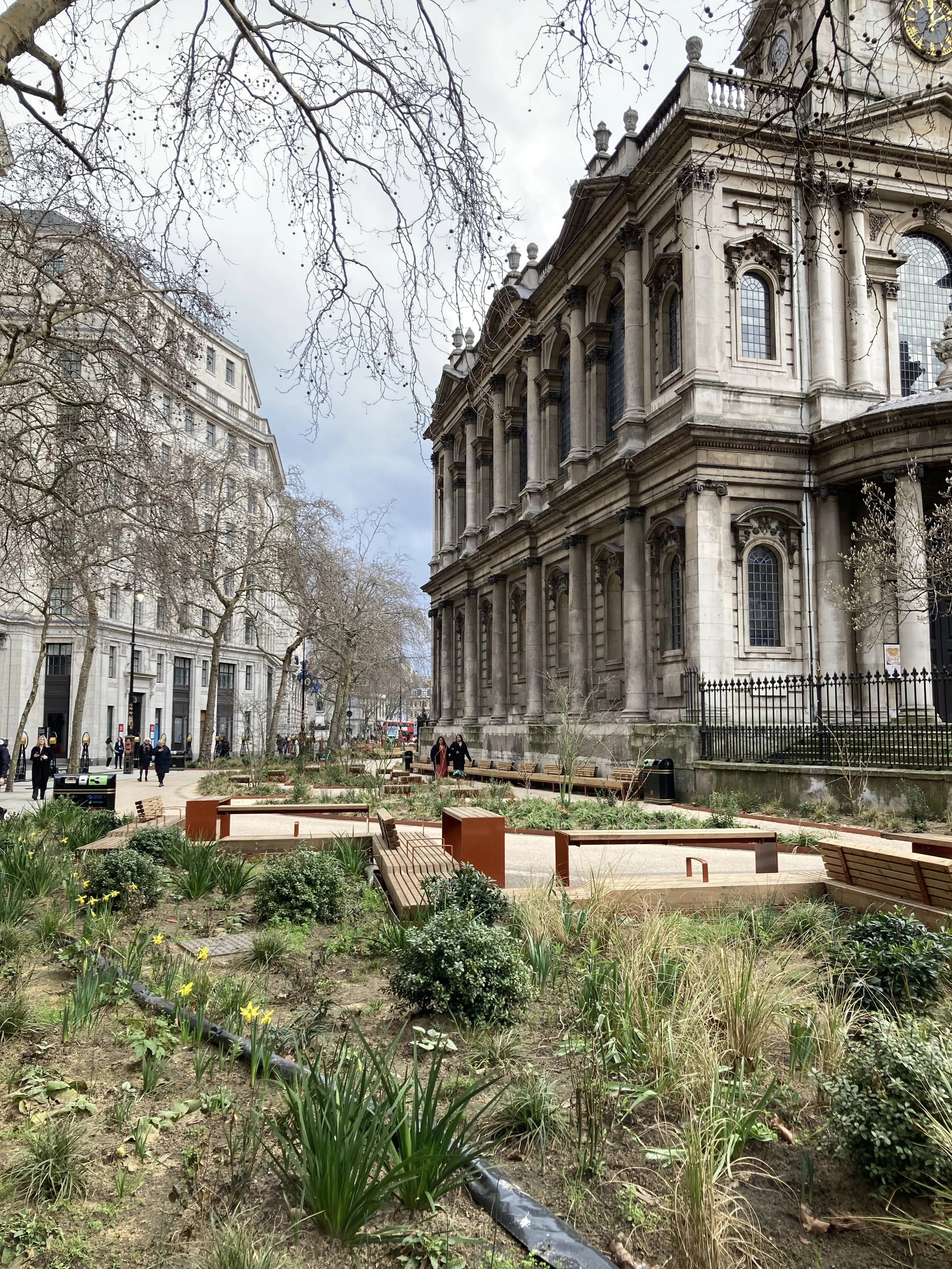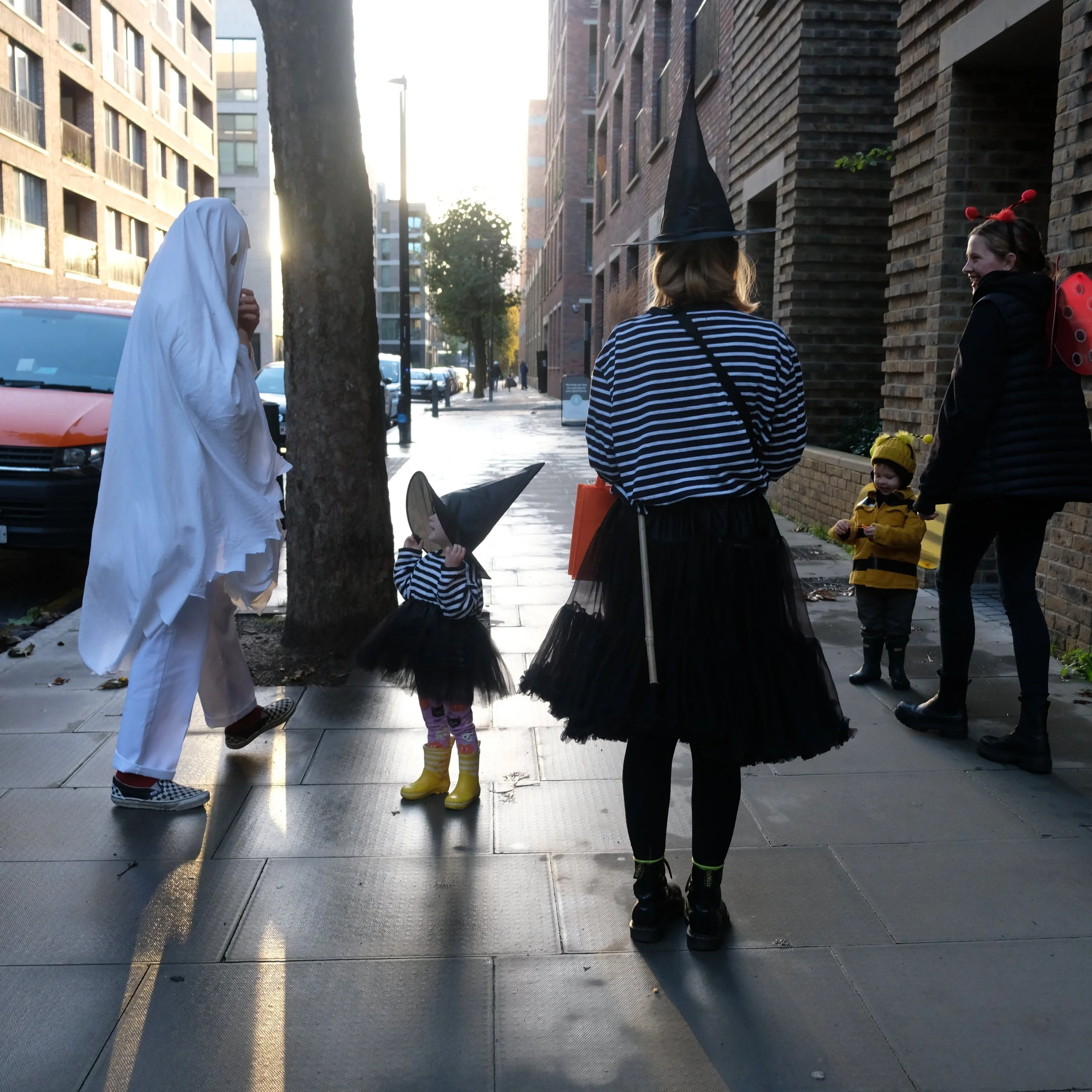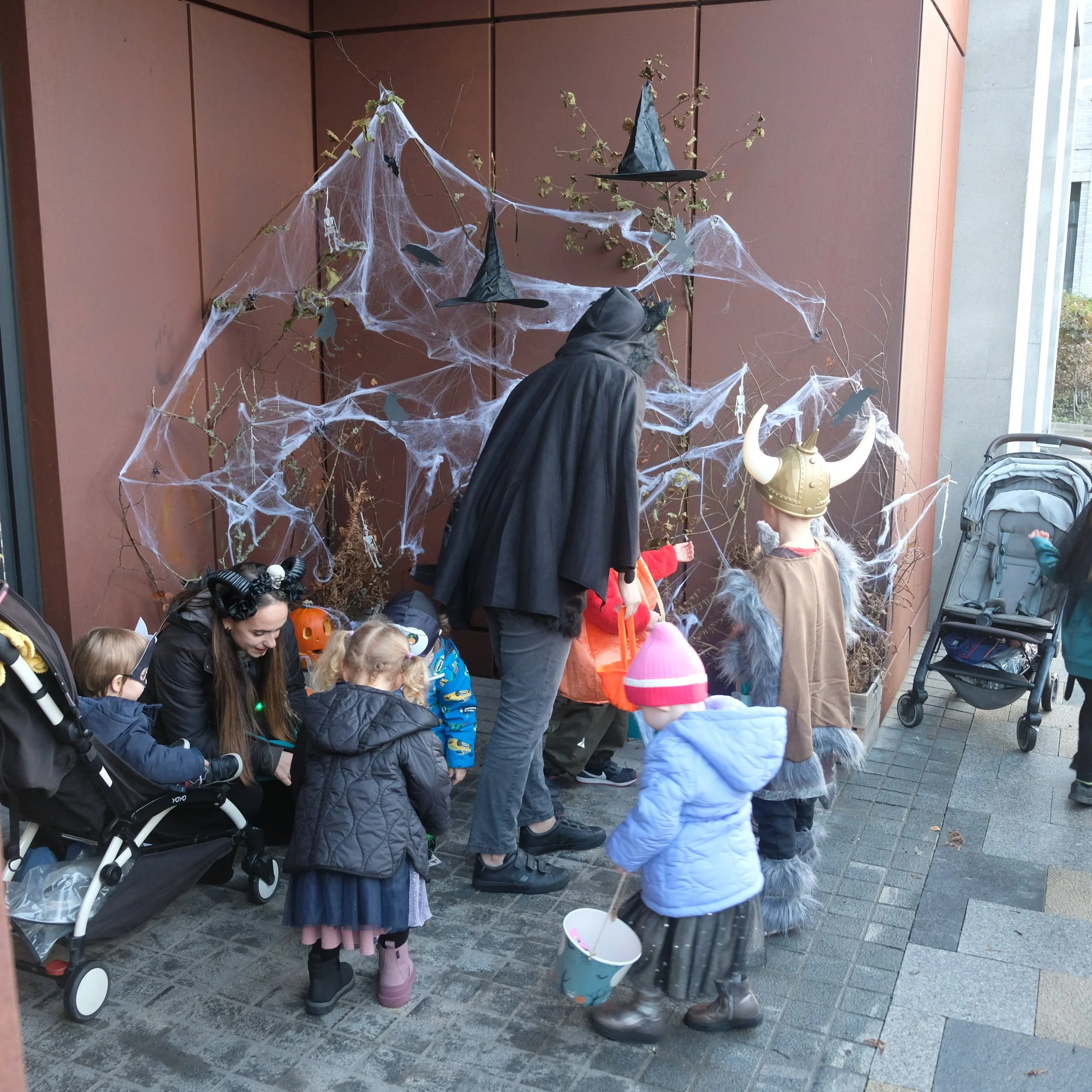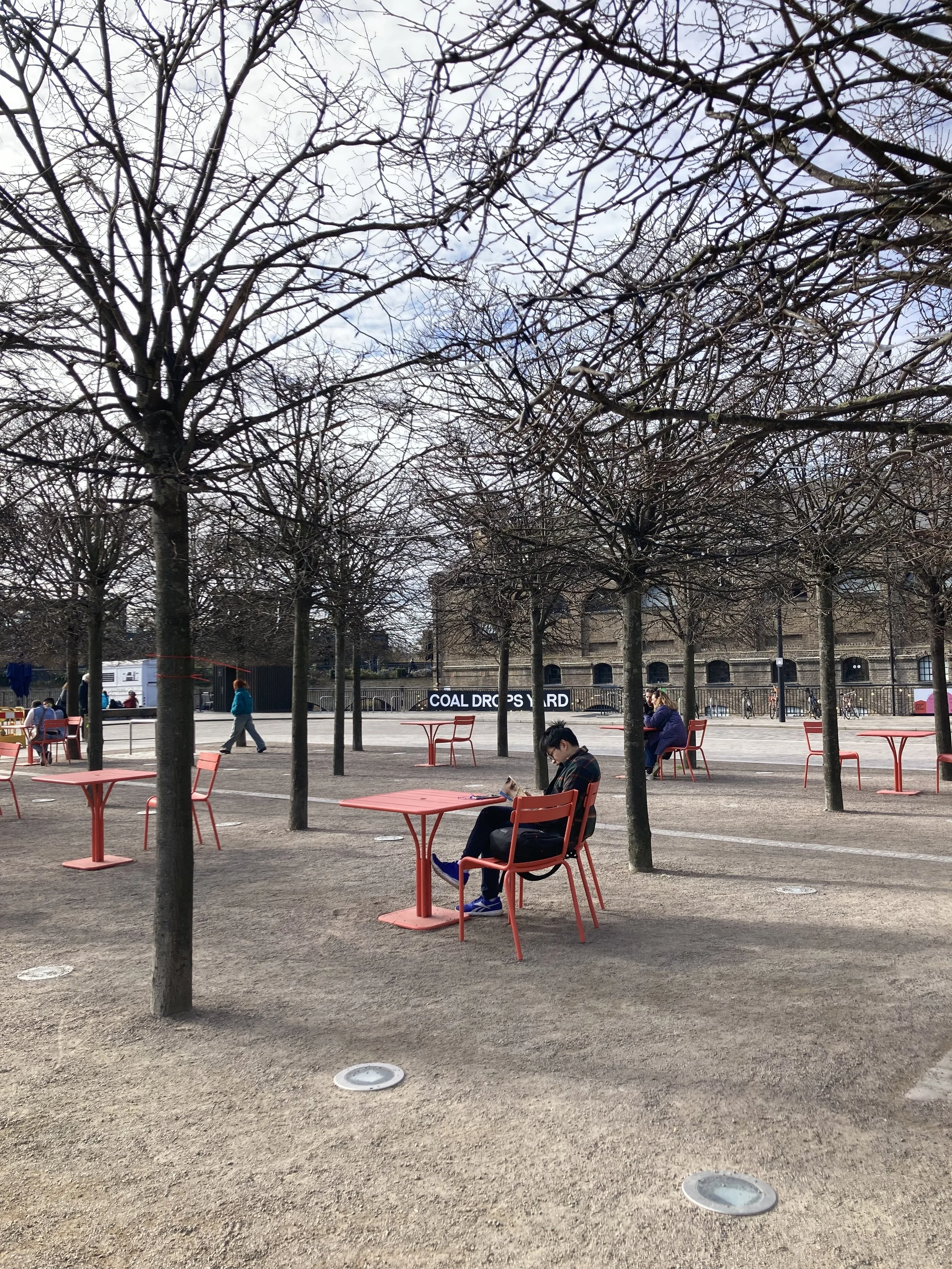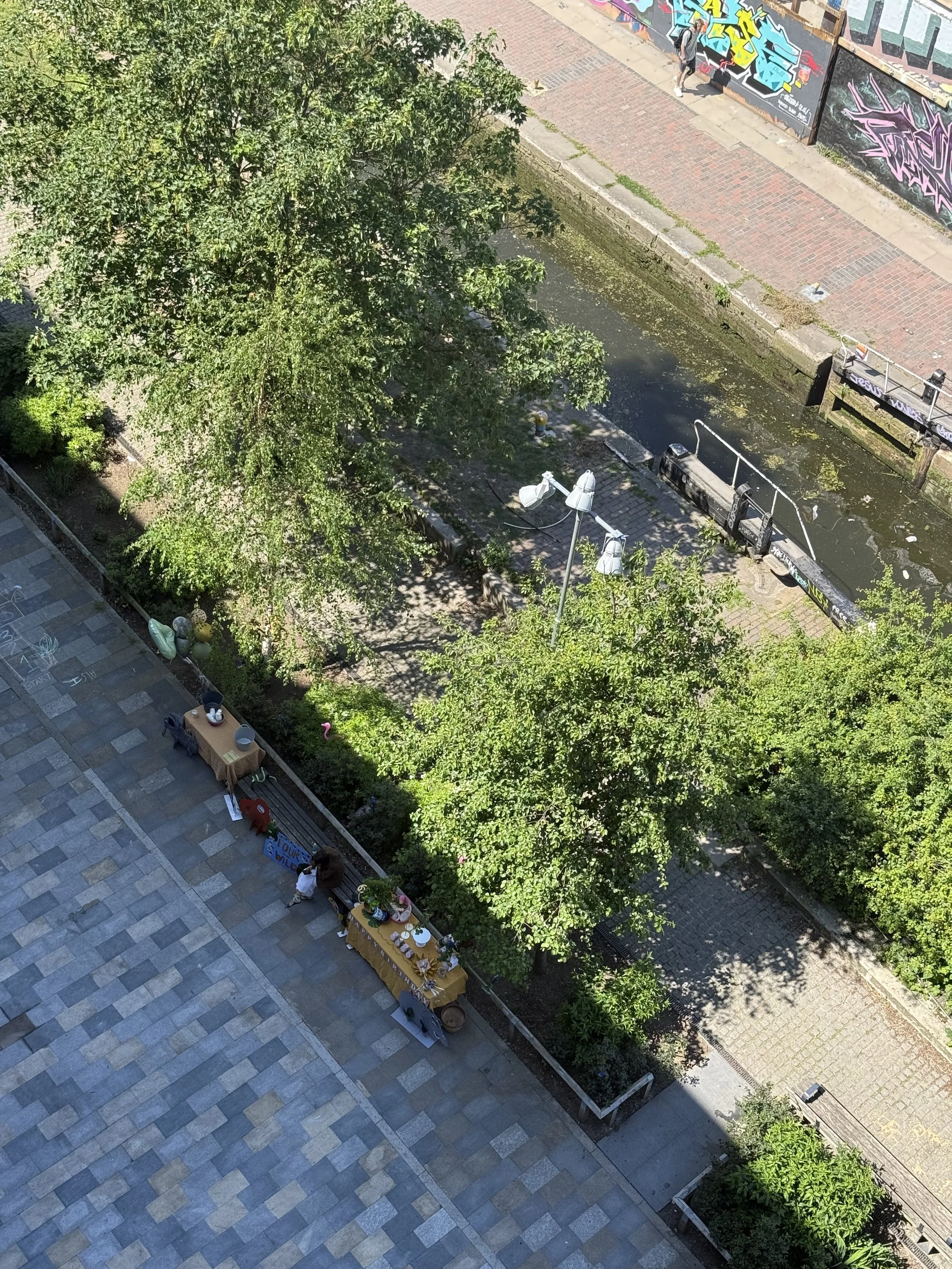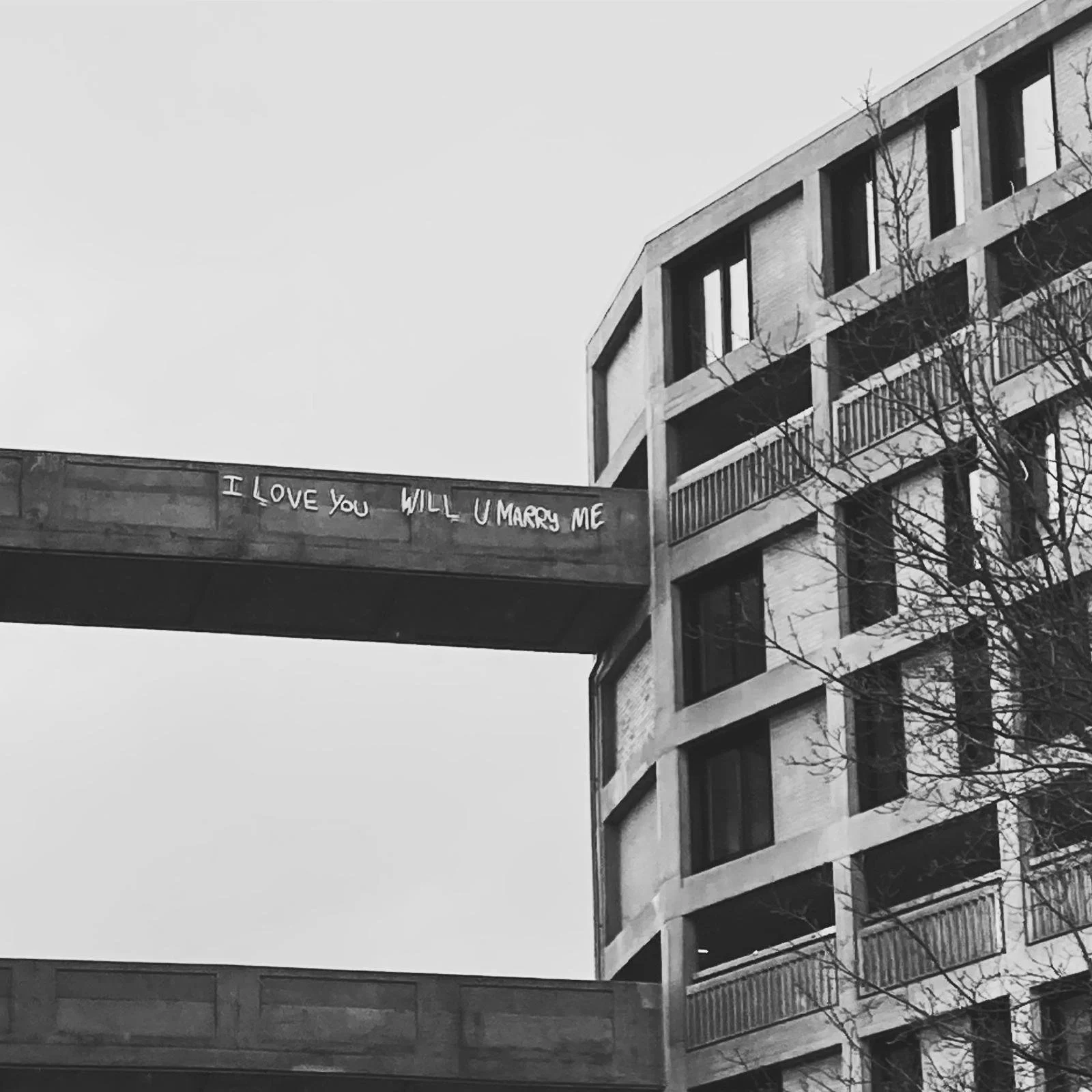Place is essentially about a sense of ownership - without this, what is left is space.
Dr Paul Keedwell, Headspace. The Psychology of City Living, London, Aurum Press, 2017
Whilst I really embrace the vision of a car-free, greener and sustainable city, the impression I had today walking along the pedestrianised Strand Aldwych it was a bit controversial and made me wondering about the suitable aesthetic of public spaces in the heart of historic London. We all agree on the principle of giving priority to pedestrian over the vehicular movement and creating pocket of social spaces within the city, but what I’m questioning is: Should the public realm project be more contextual? What is the relationship that it is creating with the buildings framing it? Are value and character of historic buildings enhanced? Isn’t the expected urban character lost and blended in a generic idea of park-like public space?
All the love I have for pumpkins and my community
1 neighbourhood
100 pumpkins
11 buildings
7 businesses,
1 public space to be activated
1 community to be brought together
I have always wondered, if we don’t leave in the dreamed townhouse, does it mean that our kids cannot enjoy the pleasure of putting some decorations on and knock the door of their neighbours for trick and treating? There was some hesitation there. Of course, everything is easier when you live in an independent house and have the freedom to dress your front door as you wish, but I really believe that a tradition can be adapted to a new way of living in denser cities.
My un-ordinary idea of a Halloween parade around Fish Island Village has become true and it was stunning. The front doors of 11 buildings were creatively dressed for the event and a volunteer for each neighbour was there welcoming the kids with lots of treats. The turnout was impressive, with about 150 people dressed up and taking part of the event and express their pride of living in the Island.
The tradition of celebrating Halloween in Fish Island, started in 2020 when I asked my neighbours to carve a pumpkin at home and bring it for display on the canal side as an opportunity for meeting and knowing each other. The idea behind this year event it was to bring Halloween back to the streets of the neighbourhood, the place where all the encounters with our residents happen daily, recreating a Halloween atmosphere around the Island and fostering a sense of place and community among the residents. The activation of the underutilised Lanterna Square - renamed Jack o Lantern Square for the event - has shown the potential of the public space as an anchor place for our community, a place where neighbours can gather and raise their voice as a whole.
The Fish Island Halloween parade has been supported by Peabody and has brought together for the first time all Fish Island Village residents and the emerging local businesses.
Kids, and adults, have carved not just pumpkins but also memories of their own neighbourhood, building a sense of belonging in a place they can call home.
Is place making successful only on private long-term ownership?
Today I attended the “Reimagining Great Estates” talk at the NLA.
The panellists shared their experience on placemaking, the importance of a long-term vision, the key role of landscape as connector of social spaces in the built environment and the importance of the engagement process.
The focus of the talk on private ownership in West London left me with some questions:
Is placemaking successful only if highly ‘curated’?
What are the principles of placemaking in residential-led projects?
Are there opportunities of placemaking in public owned land?
Is the engagement process addressing the needs of the entire community?
How much voice different age groups and minorities have in the placemaking process?
Life between buildings
Living in density comes with many challenges and one is the lack of private outdoor space that is appropriate for family and friends gathering.
Last weekend of my neighbour decided to take advantage of the accessibility to the public realm on the canal side of my neighbourhood to celebrate her daughter’s birthday.
From my balcony I could observe her setting up the table and the decorations. I saw her waiting on a bench for her friends to come visiting her and her family. She used the public realm as an extension of her living room, as a garden, her own outdoor space.
When the guests started to arrive and populate the public realm, a series of activities were initiated, kids playing, adults chatting, neighbours stopping by to say hi! A moment of her private life was under the eyes of pedestrian passing by and for a for a few hours private and public life merged in one place.
Thought the event other neighbours sit on their balconies on the lower floors to watch and enjoy the sight of the activities that were taking place.
This proves the potential that a pedestrianised public space holds for activities that assemble and bring life between buildings, and how human activities are the main attraction in city life.
I was an observer, I was a guest, I was a neighbour, I was taking ownership of the public space.
Will you marry me?
A declaration of love for council estates
In March (last year) I concluded my year of the Public Practice learning and development programme. The forum was hosted in Sheffield and what a better occasion for a visit to the regenerated Park Hill Estate, one of the case studies of my Research?
A complex of 6 buildings, built on one of the seven hills of the city, Park Hill Estate is visible from the station on your arrival to the city and glimpse of it are framed from different perspective of the town centre. However, its location on the eastern side of the railway and its modernist urban form has always made it feel isolated from the rest of the city.
Built between 1950 and 1960, it was designed by the architects Jack Lynn and Ivor Smith in line with modernist principles and the ‘street in the sky’ idea. Due to economic and social reasons, it has been abandoned just a few years after completion. Neglected for many years, the demolition has been seen the only solution to erase any social issue and the shame that it generated on Sheffield citizens.
It was saved from demolition by its Grade II listing in 1998, which recognised its architectural value in the brutalist concrete structure and in the apartments’ typology.
A program of regeneration started in 2004 led by Urban Splash and four different phases have been completed so far. It is interesting to see two completely different approaches, Phase 1 by Hawkins Brown and Phase 2 by Micheal Richy, sitting side by side. Every phase of Park Hill is different because different have been the conditions in which architects had to work in.
Phase 1 not only was required to give a new life to the building itself but had the responsibility to reestablish a connection between the Estate and the inner city. The introduction of new uses at the ground floor and the bold approach to design were therefore necessary. The idea of using colours for the renovated facade has been a good strategy to add value and visibility to a building that in the residents’ mind had become invisible.
The regeneration of Park Hill has been so successful that the Estate has become a desired place to live, especially amongst architects. Consequently, the pressure of the regeneration was less on Phase 2 and the architects could approach the design with a light touch intervention.
In the debate about rebuild or retrofit, Park Hill is a testament of how regeneration is not just about physical renovation. Regeneration is a process, and it starts in the moment a new spotlight is put on a neglected building. Regeneration is a process of acceptance, inclusion, hope and love.
I love you, will you marry me? says the neon on the concrete bridge, a statement of love for council estates.
